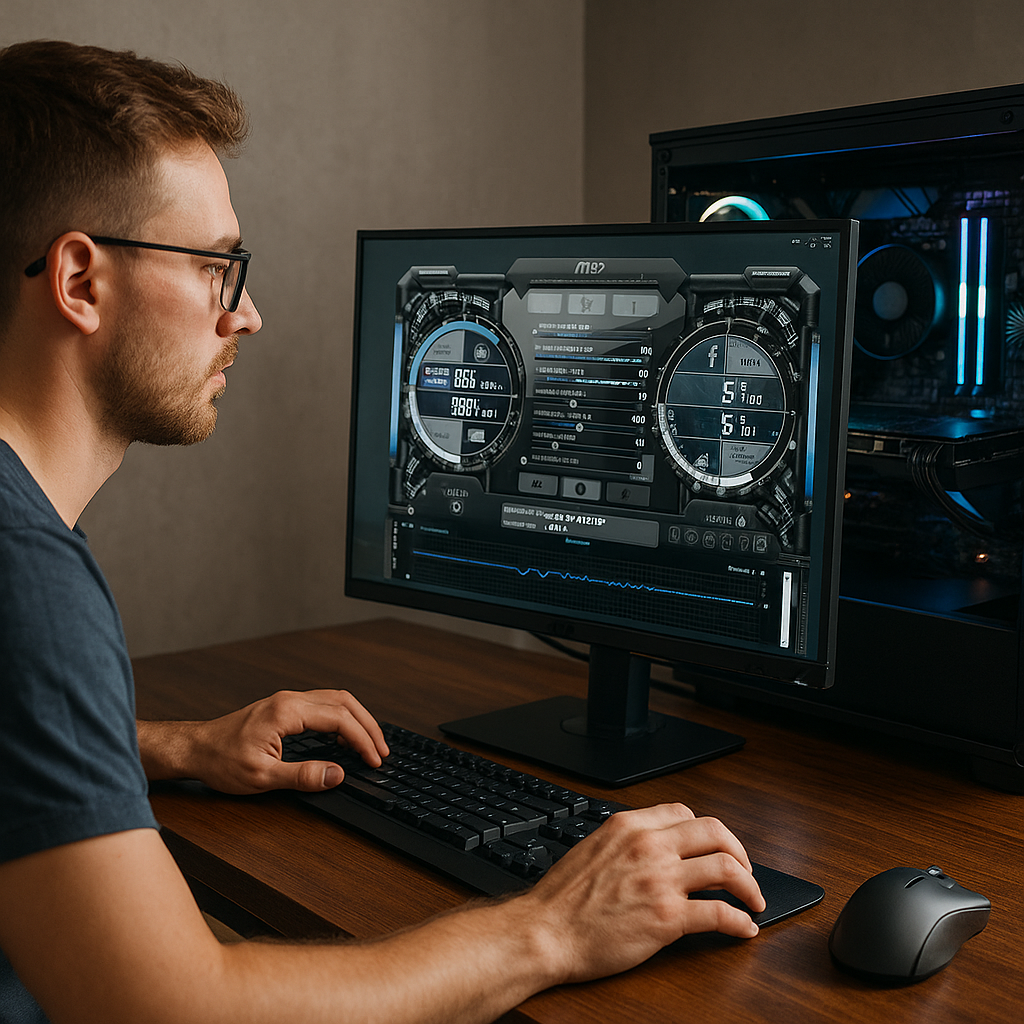If you’ve spent time researching PC hardware, you’ve probably come across the term overclocking — often associated with squeezing extra performance out of your components. But what exactly does overclocking mean? Is it safe? And most importantly: is it worth it for your use case?
In this article, we’ll explore the fundamentals of overclocking, how it works, its benefits and risks, and when it actually makes sense to overclock your CPU, GPU, or RAM.
What Is Overclocking?
Overclocking is the process of increasing the operating speed of a computer component beyond its factory-set specifications. This is commonly done with:
- CPUs (Central Processing Units)
- GPUs (Graphics Processing Units)
- RAM (Memory)
The goal is to make the component perform faster by increasing its clock speed (measured in MHz or GHz), which means more instructions or tasks processed per second.
How Does Overclocking Work?
To overclock, you manually adjust the frequency settings and sometimes voltage values through the BIOS/UEFI or with software tools provided by hardware manufacturers (like MSI Afterburner for GPUs).
For CPUs:
- You increase the multiplier or base clock to raise performance.
- More performance = more heat and power draw.
For GPUs:
- You boost the core clock and memory clock.
- You can also adjust the power limit and fan speed.
For RAM:
- You apply XMP (Extreme Memory Profile) or manually adjust memory timings and frequency.
Why Do People Overclock?
Overclocking can deliver several benefits:
- Increased performance in games, rendering, simulations, or heavy multitasking.
- Cost-efficiency: more power from the same component without buying new hardware.
- Benchmarking and bragging rights for enthusiasts.
- Experimentation and learning: a deeper understanding of how your hardware works.
Is Overclocking Safe?
Overclocking can be safe — if done correctly. However, it does come with increased risks, such as:
- Higher temperatures: leads to faster wear on components if cooling isn’t adequate.
- System instability: crashes, freezes, or corrupted data if settings are too aggressive.
- Void warranty: some manufacturers may not cover overclocked hardware.
- Shortened lifespan: sustained voltage and heat over time can reduce component life.
That’s why monitoring and cooling are essential when overclocking.
What Do You Need to Overclock Safely?
If you’re planning to overclock, make sure you have:
1. A Compatible CPU
Not all processors can be overclocked. Look for:
- Intel: Models with a “K” at the end (e.g., i5-12600K)
- AMD: All Ryzen CPUs are unlocked and support overclocking
2. A Motherboard That Supports Overclocking
- Intel: Z-series chipsets (e.g., Z690)
- AMD: B-series and X-series (e.g., B550, X570)
3. Good Cooling
Overclocking increases heat output, so you’ll need:
- A high-quality air cooler or liquid cooling system
- Proper airflow in your case
- Thermal paste applied correctly
4. A Stable Power Supply (PSU)
The PSU must handle the extra power load. Look for:
- 80 PLUS Bronze or higher
- Enough wattage headroom (add 100–150W extra if you’re pushing hard overclocks)
5. Monitoring Software
Keep an eye on temperature, voltage, and performance:
- HWMonitor
- CoreTemp
- MSI Afterburner
- CPU-Z / GPU-Z
Is Overclocking Worth It?
It depends on your goals and system.
When It Is Worth It:
- You want to get more FPS in games without upgrading hardware
- You enjoy tweaking and optimizing
- You use CPU/GPU-intensive applications
- You already have good cooling and stable power
When It’s Not Worth It:
- You’re building on a tight budget with stock cooling
- You prioritize system stability over performance
- Your hardware is already powerful enough
- You have a locked CPU or basic motherboard
In many modern gaming or productivity scenarios, the performance gains from overclocking are modest, especially with newer CPUs and GPUs already running at high base clocks.
Realistic Performance Gains
The performance bump varies depending on the component and how aggressive the overclock is:
- CPU Overclocking: Up to 10–20% in best-case scenarios
- GPU Overclocking: Typically 5–10% improvement in FPS
- RAM Overclocking: Noticeable mostly in memory-sensitive tasks like editing or gaming at high frame rates
Tips for Safe Overclocking
- Increase clock speeds gradually
- Run stress tests (like Prime95, AIDA64, or FurMark) after each change
- Monitor temperatures: keep CPUs under 85°C, GPUs under 80°C
- Save BIOS profiles so you can revert if needed
- Accept that every chip is different — some “silicon lottery” chips perform better than others
Alternatives to Overclocking
Not sure if you want to risk it? There are other ways to boost performance:
- Enable XMP profiles for RAM (safe and easy)
- Optimize Windows settings and background processes
- Update GPU drivers
- Clean your system for better airflow
- Upgrade storage to NVMe SSDs
Sometimes, small system tweaks or a RAM upgrade will do more than overclocking ever could.
Final Thoughts: Overclocking Is Powerful, but Optional
Overclocking is a powerful tool for getting more out of your hardware — but it’s not required for a great PC experience. For gamers, creators, and PC enthusiasts, a mild overclock can offer tangible gains when done carefully.
Just remember:
- Know your limits
- Monitor your temps
- Don’t push for numbers just for the sake of it
If you’re up for experimenting and you’ve got the right hardware, overclocking can be a fun way to learn and boost performance at the same time.
